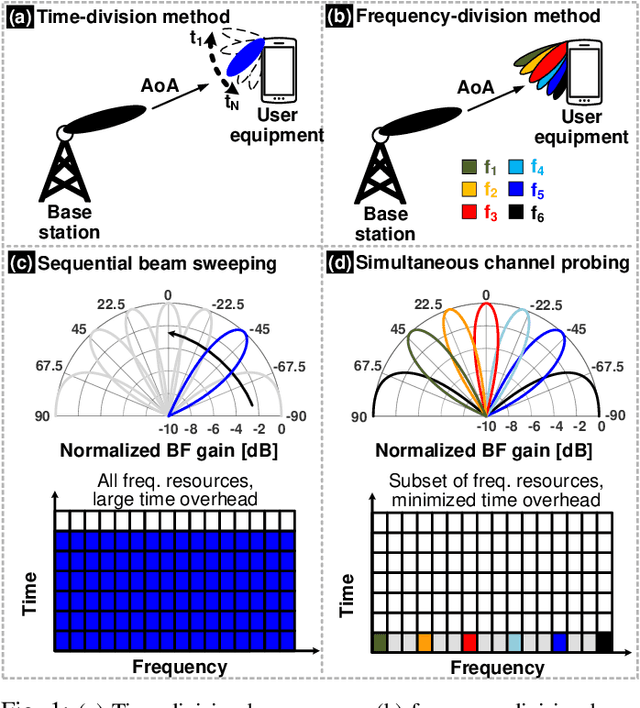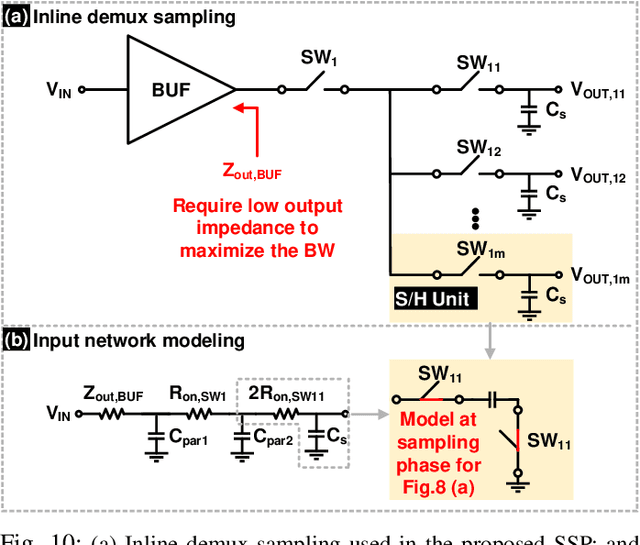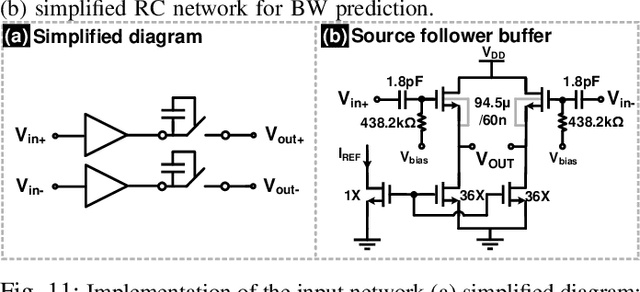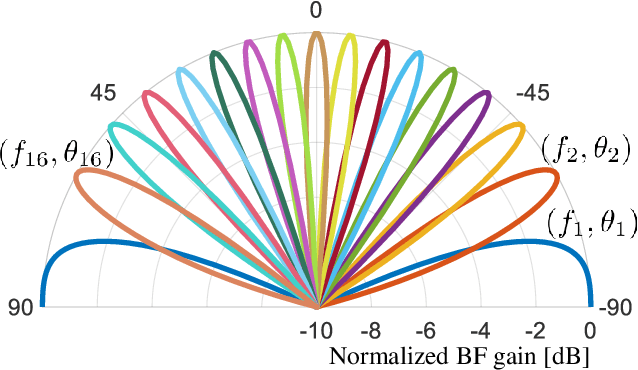Sreeni Poolakkal
Dynamic Beam-Stabilized, Additive-Printed Flexible Antenna Arrays with On-Chip Rapid Insight Generation
May 15, 2025Abstract:Conformal phased arrays promise shape-changing properties, multiple degrees of freedom to the scan angle, and novel applications in wearables, aerospace, defense, vehicles, and ships. However, they have suffered from two critical limitations. (1) Although most applications require on-the-move communication and sensing, prior conformal arrays have suffered from dynamic deformation-induced beam pointing errors. We introduce a Dynamic Beam-Stabilized (DBS) processor capable of beam adaptation through on-chip real-time control of fundamental gain, phase, and delay for each element. (2) Prior conformal arrays have leveraged additive printing to enhance flexibility, but conventional printable inks based on silver are expensive, and those based on copper suffer from spontaneous metal oxidation that alters trace impedance and degrades beamforming performance. We instead leverage a low-cost Copper Molecular Decomposition (CuMOD) ink with < 0.1% variation per degree C with temperature and strain and correct any residual deformity in real-time using the DBS processor. Demonstrating unified material and physical deformation correction, our CMOS DBS processor is low power, low-area, and easily scalable due to a tile architecture, thereby ideal for on-device implementations.
Real-time Deformation Correction in Additively Printed Flexible Antenna Arrays
Jun 12, 2024Abstract:Conformal phased arrays provide multiple degrees of freedom to the scan angle, which is typically limited by antenna aperture in rigid arrays. Silicon-based RF signal processing offers reliable, reconfigurable, multi-functional, and compact control for conformal phased arrays that can be used for on-the-move communication. While the lightweight, compactness, and shape-changing properties of the conformal phased arrays are attractive, these features result in dynamic deformation of the array during motion leading to significant dynamic beam pointing errors. We propose a silicon-based, compact, reconfigurable solution to self-correct these dynamic deformation-induced beam pointing errors. Furthermore, additive printing is leveraged to enhance the flexibility of the conformal phased arrays, as the printed conductive ink is more flexible than bulk copper and can be easily deposited on flexible sheets using different printing tools, providing an environmentally-friendly solution for large-scale production. The inks such as conventional silver inks are expensive and copper-based printable inks suffer from spontaneous metal oxidation that alters trace impedance and degrades beamforming performance. This work uses a low-cost molecular copper decomposition ink with reliable RF properties at different temperature and strain to print the proposed intelligent conformal phased array operating at 2.1 GHz. Proof-of-concept prototype $2\times2$ array self-corrects the deformation induces beampointing error with an error $<1.25^\circ$. The silicon based array processing part occupying only 2.56 mm$^2$ area and 78.5 mW power per tile.
Multi-Mode Spatial Signal Processor with Rainbow-like Fast Beam Training and Wideband Communications using True-Time-Delay Arrays
Jan 08, 2022



Abstract:Initial access in millimeter-wave (mmW) wireless is critical toward successful realization of the fifth-generation (5G) wireless networks and beyond. Limited bandwidth in existing standards and use of phase-shifters in analog/hybrid phased-antenna arrays (PAA) are not suited for these emerging standards demanding low-latency direction finding. This work proposes a reconfigurable true-time-delay (TTD) based spatial signal processor (SSP) with frequency-division beam training methodology and wideband beam-squint less data communications. Discrete-time delay compensated clocking technique is used to support 800~MHz bandwidth with a large unity-gain bandwidth ring-amplifier (RAMP)-based signal combiner. To extensively characterize the proposed SSP across different SSP modes and frequency-angle pairs, an automated testbed is developed using computer-vision techniques that significantly speeds up the testing progress and minimize possible human errors. Using seven levels of time-interleaving for each of the 4 antenna elements, the TTD SSP has a delay range of 3.8 ns over 800 MHz and achieves unique frequency-to-angle mapping in the beamtraining mode with nearly 12 dB frequency-independent gain in the beamforming mode. The SSP is prototyped in 65nm CMOS with an area of 1.98mm$^2$ consuming only 29 mW excluding buffers. Further, an error vector magnitude (EVM) of 9.8% is realized for 16-QAM modulation at a speed of 122.8 Mb/s.
Wideband Beamforming with Rainbow Beam Training using Reconfigurable True-Time-Delay Arrays for Millimeter-Wave Wireless
Nov 30, 2021



Abstract:The decadal research in integrated true-time-delay arrays have seen organic growth enabling realization of wideband beamformers for large arrays with wide aperture widths. This article introduces highly reconfigurable delay elements implementable at analog or digital baseband that enables multiple SSP functions including wideband beamforming, wideband interference cancellation, and fast beam training. Details of the beam-training algorithm, system design considerations, system architecture and circuits with large delay range-to-resolution ratios are presented leveraging integrated delay compensation techniques. The article lays out the framework for true-time-delay based arrays in next-generation network infrastructure supporting 3D beam training in planar arrays, low latency massive multiple access, and emerging wireless communications standards.
 Add to Chrome
Add to Chrome Add to Firefox
Add to Firefox Add to Edge
Add to Edge